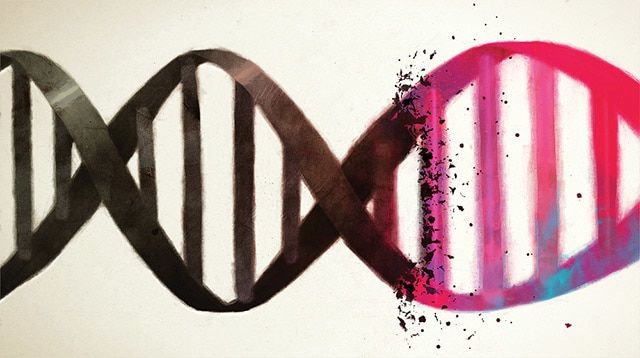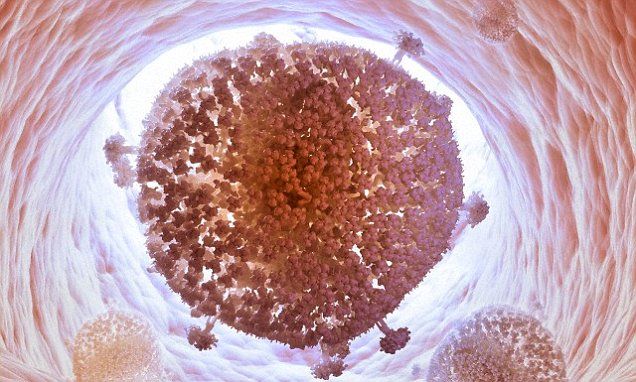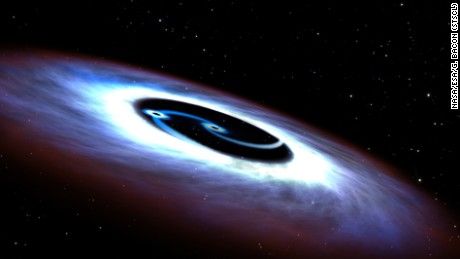“This Report to the Club of Rome attempts to assess the condition of the tropical rainforests over the past 40 years and to project their likely future over the next 40 years, in terms of forest cover change, drivers of deforestation, impacts on biodiversity, and the consequences of climate change.”
Get the latest international news and world events from around the world.

A Surprise Source of Life’s Code
Junk DNA can occasionally spit out useful genes. Randomly?
Emerging data suggests the seemingly impossible — that mysterious new genes arise from “junk” DNA.

Scientists ‘delete’ HIV virus from human DNA for the first time
smile
A team at Temple University in Philadelphia used a combination of a DNA-snipping enzyme to eradicate the viral genome from the human cell.

Hacking Aging
What would you say if I told you that aging happens not because of accumulation of stresses, but rather because of the intrinsic properties of the gene network of the organism? I’m guessing you’d be like: :o.
So, here’s the deal. My biohacker friends led by Peter Fedichev and Sergey Filonov in collaboration with my old friend and the longevity record holder Robert Shmookler Reis published a very cool paper. They proposed a way to quantitatively describe the two types of aging – negligible senescence and normal aging. We all know that some animals just don’t care about time passing by. Their mortality doesn’t increase with age. Such negligibly senescent species include the notorious naked mole rat and a bunch of other critters like certain turtles and clams to name a few. So the paper explains what it is exactly that makes these animals age so slowly – it’s the stability of their gene networks.
What does network stability mean then? Well, it’s actually pretty straightforward – if the DNA repair mechanisms are very efficient and the connectivity of the network is low enough, then this network is stable. So, normally aging species, such as ourselves, have unstable networks. This is a major bummer by all means. But! There is a way to overcome this problem, according to the proposed math model.
The model very generally describes what happens with a gene network over time – the majority of the genes are actually working perfectly, but a small number doesn’t. There are repair mechanisms that take care of that. Also, there are mechanisms that take care of defected proteins like heat shock proteins, etc. Put together all of this in an equasion and solve it, and bam! here’s an equasion that gives you the Gompertz law for all species that have normal aging, and a time independent constant for the negligibly senescent ones.
What’s the difference between those two aging regimes? The model suggests it’s the right combination of DNA repair efficiency and the combined efficiency of proteolysis and heat shock response systems, mediating degradation and refolding of misfolded proteins. So, it’s not the the accumulation of damages that is responsible for aging, but rather the properties of the gene network itself. The good news is that even we are playing with a terrible hand at first, there is a chance we can still win by changing the features of our network and making it stable. For example, by optimizing misfolded protein response or DNA repair.

Here’s why Elon Musk fears the ‘robocalypse’ — By Shawn Langlois/ Marketwatch
The comment seems to have been made at least partly in jest, but Elon Musk has been very clear in the past that the dangers posed by artificial intelligence are no laughing matter.
So why not killer robots?
“And people wonder why I’m worried about the robocalypse…” Musk wrote in this Instagram post over the weekend. As you can see by the caption, he’s talking about a Tesla TSLA, +0.23% production line comprised of 542 robots, with 15 operating at the same time. Read more

5G, one wireless technology to rule them all?
The progress from 2G to 3G, and from 3G to 4G LTE has been primarily about improvements to the standards related to cellular technology. However the move from 4G to 5G could be quite different. …But, there is more to 5G than just super fast cellular tech. There is an active and open discussion going on to see if 5G can in fact become the de facto for all wireless standards. No more Wi-Fi, no more Bluetooth, no more 4G LTE, just 5G, one wireless technology to rule them all.
There is an active discussion going on to see if 5G can become the de facto for all wireless standards. No more Wi-Fi, Bluetooth, or 4G LTE, just 5G.

Double black hole is powering quasar, astronomers find
Astronomers have discovered a galaxy is being powered by a quasar that contains two black holes whirling about each other.

Life Might Spread Across Universe Like an ‘Epidemic’ in New Math Theory
As astronomers get closer to finding potential signatures of life on faraway planets, a new mathematical description shows how to understand life’s spread — and to determine if it’s jumping from star to star. “Life could spread from host star to host star in a pattern similar to the outbreak of an epidemic,” study co-author Avi Loeb of the Harvard-Smithsonian Center for Astrophysics (CfA) said in a statement.

‘Decorated’ graphene is a superconductor
Lithium-doped graphene turns out to be a conventional superconductor with a transition temperature of 5.9 K.
Depositing lithium on 2D material generates Cooper pairs.

Quantum revolution: China set to launch ‘hack proof’ quantum communications network
China is set to complete the installation of the world’s longest quantum communication network stretching 2,000km (1,240miles) from Beijing to Shanghai by 2016, say scientists leading the project. Quantum communications technology is considered to be “unhackable” and allows data to be transferred at the speed of light.
By 2030, the Chinese network would be extended worldwide, the South China Morning Post reported. It would make the country the first major power to publish a detailed schedule to put the technology into extensive, large-scale use.
The development of quantum communications technology has accelerated in the last five years. The technology works by two people sharing a message which is encrypted by a secret key made up of quantum particles, such as polarized photons. If a third person tries to intercept the photons by copying the secret key as it travels through the network, then the eavesdropper will be revealed by virtue of the laws of quantum mechanics – which dictate that the act of interfering with the network affects the behaviour of the key in an unpredictable manner.